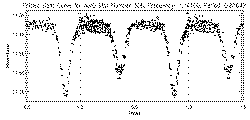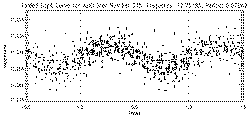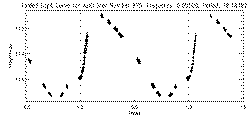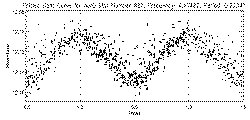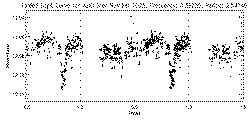The STARE project has to-date observed two planets orbiting other stars:
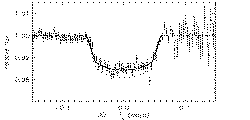
|
Planet HD209458b was first discovered using the radial velocity method, but was subsequently the first planet observed to transit. Click on curve for more information. |
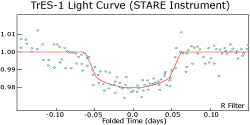
|
Planet TrES-1 was our first planet discovery, observed with the STARE telescope in the summer of 2003. It was the first transiting planet discovered by a small-aperture, wide-field survey. Click on curve for more information. |
Auriga Field Variable Star Light Curves
For each of the 24,000 stars in the Auriga field of view, photometry data from the STARE instrument can be used to produce a light curve -- a plot of the brightness variation of the star in time. Most stars are essentially constant in brightness, but several percent of the stars observed by STARE are variable. The figures below are a sampling of different variable types: eclipsing, delta scuti, and cepheid. The lightcurves were produced by folding data (taken over a 45 day span in 1997) over the period of variability (determined through spectrum analysis). The change in brightness is measured in magnitudes, where a magnitude change of 0.1 corresponds roughly to a 10% change in stellar brightness; brightness increases upwards. These curves illustrate the types of "false alarms" we must weed through in order to find real transits like those above.
Click on curves to view larger image.

